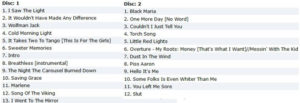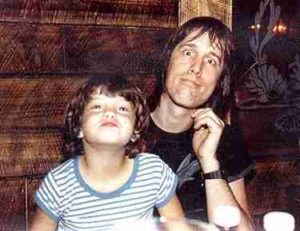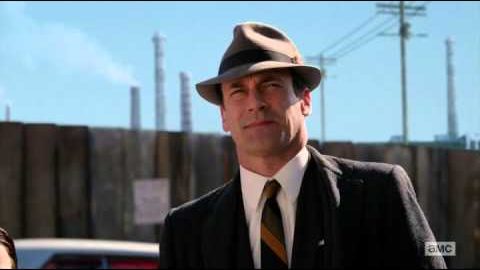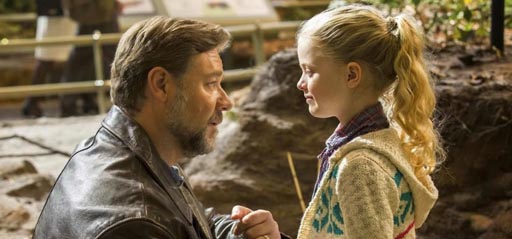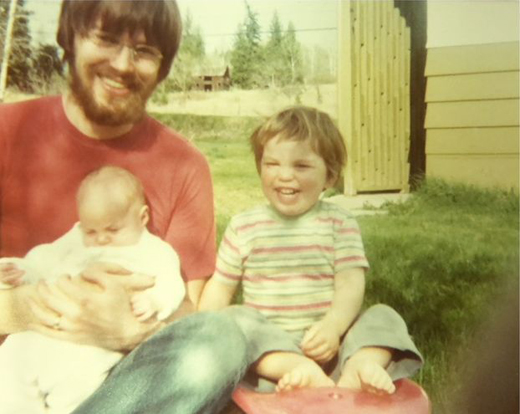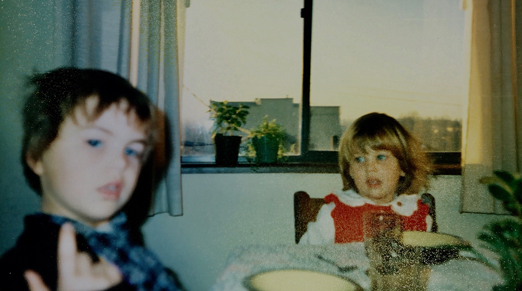
1978. Jude, at age 3½, and Megan at near 2 years of age. At the kitchen table for breakfast.
A couple of weeks ago, when I was extolling the virtues of my Instant Pot to a friend, in a lull in the conversation, she turned to me and said, “You like to cook, don’t you?”
The short answer: I derive pleasure from both cooking and baking.
Here’s the story behind my love for the culinary powers of the kitchen.
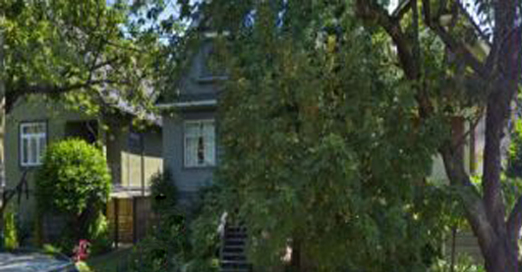
1616 Semlin Drive, at E. 1st Ave. in Vancouver. One of the homes I lived in growing up.
From my earliest days, I fended for myself.
My mother worked three jobs, and my father worked the afternoon shift at the Post Office. When I arrived home from school, although my father often left a stew bubbling away in the slow cooker, from age seven on, for the most part if I wanted to eat, I’d have to make breakfast, lunch and dinner for myself, and for my sister.
So, being somewhat industrious, I learned to cook — well, make sandwiches and, for dessert, Jello, at least for the first few years.
I loved turkey growing up (all that triptiphan), so with the help of my mother, I learned to make her delicious turkey, stuffing, gravy, mashed potatoes and vegetables. For the most part, though, my cooking skills were rudimentary — but I didn’t starve, and more often than not there was food in my belly.
When in 1970, Cathy and I moved in together, marrying soon after, I was responsible for most of the cooking. Cathy’s mom sent her out $1000 a month (she didn’t know we were living together), visiting every three months, taking us to the local Woodward’s grocery floor, where she dropped in excess of $300 at each visit.
With Cathy’s mother money, we ate a fairly staple diet of generously thick T-bone steaks and baked potatoes.

Simon Fraser University’s Louis Riel House, SFU’S student family 1 + 2 bedroom residence.
Soon after moving into the Louis Riel Student Residence at Simon Fraser University in 1971, Cathy joined a women’s group, who met every Wednesday evening. Among the decisions that were taken by the women’s group was this: men shall participate in all household chores, and share in all food preparation.
As we often ate together with other of the students in the residence, my specialty became salads — all different kinds of healthy, nutritious salads, chock full of vegetables, nuts, sunflower seeds, and more.
At this point, Cathy still hated to cook — there was immense pressure placed on Cathy by her peers to develop culinary skills, but she refused. All that changed in the summer of 1973, which is a story for another day.
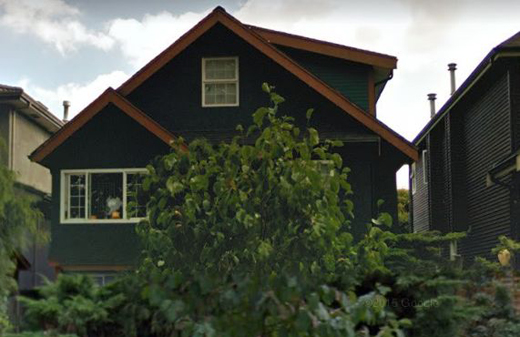
2182 East 2nd Avenue, in the Grandview Woodland neighbourhood of Vancouver.
When Cathy and I separated in 1978 — Jude and I lived in the home above, before Jude, Megan and I moved to Simon Fraser University and Louis Riel House, when I began work on my Masters degree — the thought occurred to me one morning when making breakfast that I was now the lone parent, and the sole person responsible for ensuring the children ate nutritious foods at each meal in order that they might grow up into healthy adults.
I took on the task of learning the art of cooking (and baking), in earnest.
There was, however, a quid pro quo involved.
After returning from a day of larnin’ and T.A.’ing at SFU, after picking up the children at daycare at 4:30pm, and walking the relatively short distance to our two-bedroom apartment at Louis Riel House, while the children played with their friends on the lawn in front of our apartment, I prepared dinner, calling them in about 45 minutes after dinner preparation had begun.
The kids were famished, and so was I.
Here’s where the quid pro quo came in: at the end of each meal, each of the children had to turn and say to me some version of, “Daddy that was a good dinner. It was mmmm, delicious. Thank you for making dinner for all of us, and all the work you put in to feeding us healthy and nutritious breakfasts, lunches and dinners, and all those wonderful desserts we love!”
I needed the incentive provided to me by both children, and their gratitude — which, in time, they came to acknowledge as their own. The kids felt good about encouraging me, as I encouraged them in all of their endeavours.
We were a happy family, and all was well with the world for the three of us.
Now, I was an adventuresome cook, and not everything I made turned out to the liking of all of us, or each one of us.
Being a dedicated democrat, Jude, Megan and I made a deal with one another in respect of dinner. Both children had to eat at least two bites of each food item I prepared: after all the work I put into preparing a dish, the least they could do was try out the dish to see whether they might like it.
Most of the time they did, but sometimes not.
One night, I made cream of escargot soup. Honestly, it wasn’t bad. But at the end of the soup entrée, I turned to the children and asked them what they thought, to which they replied almost in unison, “It was all right, tasty enough I suppose, but I’m not sure if I’d ever want to have it again.”
I agreed with them. We never ate cream of escargot soup ever again.
Each of us were allowed to have three foods on a list of our creation, foods we did not have to eat, no matter what.
Megan had three foods, Jude had three foods, and I had three foods — those foods changed over a period of time.
In order to add a food to our individual “nah, I don’t want to eat that food” list, some food on each of our lists had to come off. Took some thought on the part of the children as to whether they wanted to remove a food.
Megan, for a great long while didn’t like avocados — but one day, while placing a new food she didn’t like onto her “don’t eat” list, she took avocados off her list, eventually coming to love avocados, as she does to this day.
Watching me prepare meals all the time he was growing up caused Jude to want to become a chef — he worked in the food industry throughout his late teens and twenties, before getting into teaching, which paid better, and was overall less stressful, with “more honourable people”, he’d say to me.
In her teens, Megan became a vegan — there’s a story there, too, which I’ll leave for another day — and, for the most part, took on the preparation of her own meals, as did Jude over a period of time.
After the summer of 1973, Cathy became a great cook — there’s not much I miss about that tumultuous marriage, but I sure miss Cathy’s avant-garde cooking, her culinary craftsmanship, spicing and phenomenally delicious cooking.
Ah well.




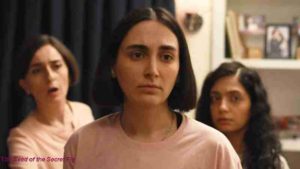 The Seed of the Sacred Fig
The Seed of the Sacred Fig



